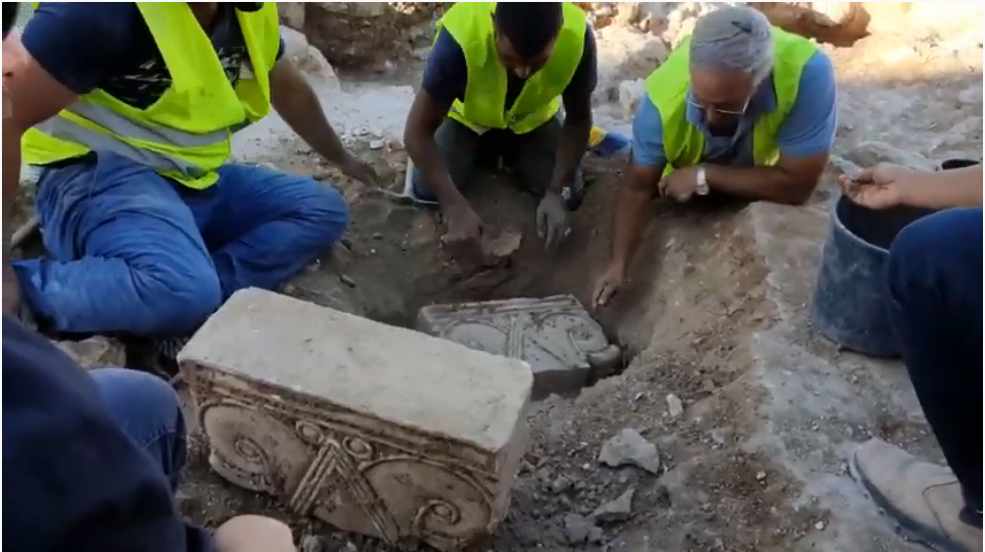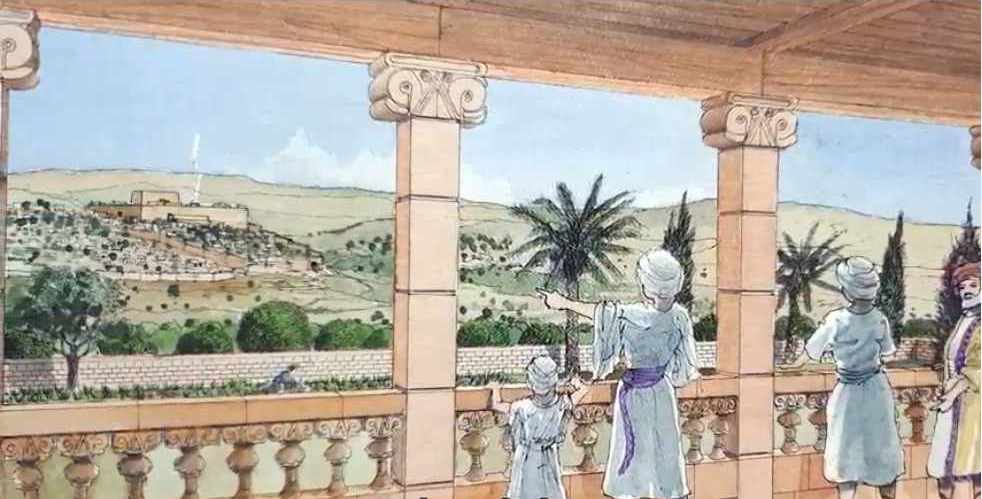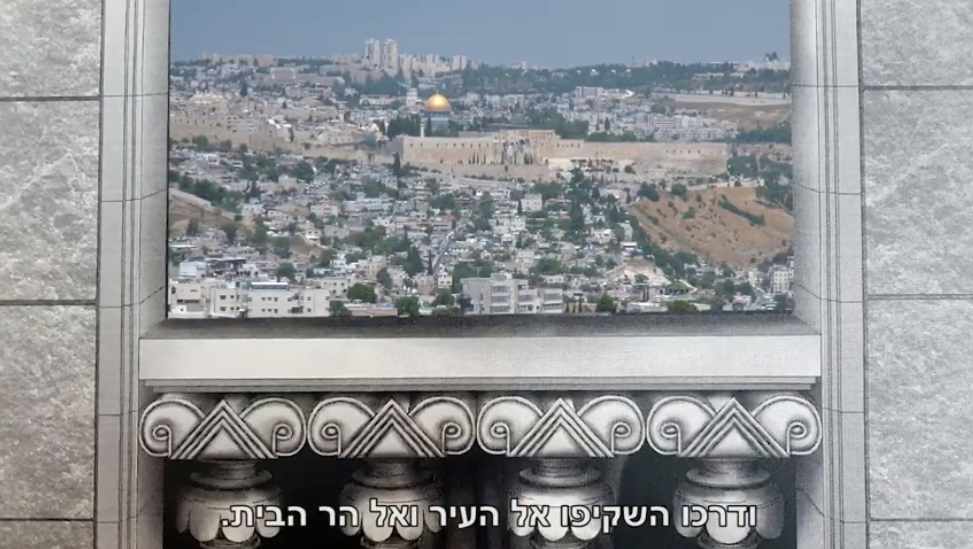Uncovering the Find

Three immaculately preserved 2,700-year-old decorated column heads, or capitals, from the First Temple period that indicate a connection to the Davidic Dynasty were found in a dig directly south of Har Habayis at the Armon Hanatziv Promenade.
Yaakov Billig, an archaeologist with the City of David organization, began exploring the Armon Hanatziv area about 30 years ago. He was working at the site when the sound of a spade scraping a stone slab surprised him. After a careful excavation, archaeologists at the site uncovered the capital, whose style is found in royal and official buildings in the kingdoms of Israel and Judea during the First Temple period.
The general design was familiar and a version of it appears on one side of the current Israeli 5 shekel coin.
They were surprised another identical capital buried directly underneath it. A third identical stone was found nearby. The stones seem to have been hidden intentionally.
Artist's impression of what the original building may have looked like with the original view

Artist's reconstruction of an original window with the modern view from the spot

The rest of the site was completely destroyed and many of the surviving stones were recycled in other buildings.
The capitals are linked to the Davidic Dynasty because such designs from the period of the kingdoms of Israel and Judah have only been found in Israel within the areas they ruled. The design has also been found from later periods in other locations throughout the Mediterranean and Middle East.
Besides the capitals, additional artifacts found at the site indicate a royal or noble building as well, including a toilet, which was only found in the homes of the wealthy in that period.
Using evidence from artifacts found at the site and the level at which they were found, archaeologists dated the capitals to the seventh century BCE, between the rule of King Chizkiyohu and the Babylonian conquest and destruction of Jerusalem.
The other archaeological sites in the area tend to be from the Second Temple period. Perhaps other mansions and palaces may be found in the area if it is explored further.
About 20 to 30 similar capitals exist, but these are generally larger and reconstructed from ruins found. The ones found in Armon Hanatziv are medium-sized and smaller than the more commonly found capitals and may have been used to decorate pillars in a courtyard or patio. Smaller stones of a similar design were found at the site as well and seem to have been used in a decorative window sill.
A large number of additional artifacts from the same period were found at the site as well. But the capitals may be some of the greatest treasures, connecting the site to the stories of the Davidic kingdom in the Bible. The additional artifacts found at the site are being studied and will be revealed to the public at a later date.




